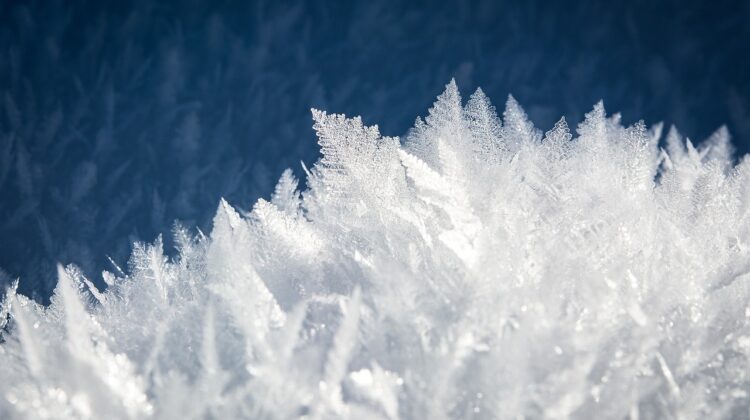
Freshly fallen snow is an effective sound dampener. The explanation lies in the structure of the snowflakes. Freshly fallen snow tends to have a soft and loose texture. This characteristic allows the snow to deform under the pressure of sound waves, dissipating energy and reducing the reflection of sound.
”There is nothing in the world as silent as snow.”
This is the beginning of a well-known poem by Helge Rode written in 1886. And most people can probably nod in recognition of those words. The feeling of stepping out into a snow-covered landscape and experiencing how quiet it feels. Indeed, the sensation is real because snow exerts a sound-dampening effect, particularly when it is freshly fallen.
The ability to dampen sound comes from the appearance of snow
The reason for snow’s good ability to absorb sound lies in the structure of snowflakes. The snow crystals have a jagged appearance and an open structure. When the flakes fall and settle on top of each other, there is a lot of air between the flakes. It is this air between the flakes that causes sound waves to be absorbed. Also as sound waves interact with the ice crystals in snow, they experience friction and damping effects. This interaction converts the kinetic energy of the sound waves into heat, reducing the amplitude of the waves and attenuating the sound. Finally, the air trapped within the snow’s porous structure also plays a role in sound absorption. The air pockets within the snow can trap and absorb sound waves, preventing them from bouncing back and being transmitted further.
- A snowflake has a porosity that is completely different from a raindrop. The flake falls down and does not make noise like the raindrop, and when it settles – and we don’t tread on the snow – the snow acts as a sound insulator.
- It’s important to note that the degree of sound absorption by snow can vary based on factors such as snow density, temperature, and moisture content.

A German study conducted by the Fraunhofer research institution shows that snow’s ability to absorb sound is absolutely top-notch. On a scale from 0 to 1, where 0 is no sound absorption and 1 is absorption of all sound, snow’s ability to absorb sound ranges between 0.5-0.9.
Also the irregular and uneven surfaces of snow create multiple points of reflection, diffraction, and scattering. This randomness in surface structure contributes to the absorption of sound as it travels through the snow. Snow is indeed an effective sound dampener.
Some winter phenomena sharpen sound snow’s ability as a sound dampener works best if the snow is frost snow. When rain mixes with snow, as seen in sleet, it destroys the porosity of the snowflake and gives the crystals a much harder surface. As a result, they gain the ability to reflect sound instead of absorbing it.
Freeze!
The same applies when surfaces freeze into ice, such as when lakes freeze. Here, the sound hits a hard surface and is reflected instead of being absorbed. Similarly, hard-packed snow, such as on sledding hills, can no longer absorb sound to the same extent. Sound sources generally change during snowfall and here is no doubt that snowfall changes the sound landscape – but several factors come into play:
- When it has snowed, there is a change in sound sources in general. Cars drive more slowly on the road, and maybe there are fewer people outside. The usual noise you hear has probably changed or possibly reduced. When combined with the fact that snow effectively dampens sound, it creates a more silent atmosphere.
The creaking snow
Untrodden snow dampens the sound, but on the other hand, the joy of stepping on snow and hearing it crunch and creak is familiar to many.The sound originates from the destruction of the fine structures of the snow crystal, which also diminishes its ability to absorb sound. This process can be likened to pressing on bubble wrap, where the sound is created by compressing the air between the snowflakes.I wonder if we love to ‘crack’ bubble wrap because of it’s biophilic sound…

Read about absorption coefficients, ISO 354 and ISO 11654 (classification of products) here.
Parts of this article is a free translation of an interview done with Mai-Britt Beldam by Ellen Nybo Hansson, TV2.

